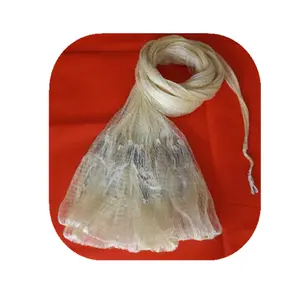
BKK Premium Stainless Steel Split Ring Swivel High Quality Fishing Tackle For River Lake Stream Fishing Accessories


Deep Sea Multifilament Knotted Fishing Net Trawling Net By Manufacturers Nylon Material For Trawling























Dyneema fishing nets, known for their exceptional strength and durability, are a significant category in the commercial fishing industry. These nets are crafted from ultra-high molecular weight polyethylene (UHMWPE), which imparts a high resistance to abrasion, chemicals, and UV radiation. This introduction delves into the various aspects of Dyneema nets, providing insights into their construction, types, and applications.
There are several types of Dyneema fishing nets, each designed to meet specific fishing requirements. The versatility of these nets allows for their use in a range of environments, from freshwater lakes to the open sea. Applications include trawling, purse seining, and longlining, among others. The choice of net type is critical and depends on the target species, fishing method, and water conditions.
The material composition of Dyneema nets is a key feature that sets them apart. Dyneema fibers are known for their impressive tensile strength, which is reflected in the net's performance. These nets are lightweight, aiding in ease of handling and efficiency in water. Moreover, the inherent properties of Dyneema ensure that the nets maintain their integrity even under extreme stress, making them a reliable choice for intensive fishing operations.
The advantages of using Dyneema fishing nets are manifold. Their high strength-to-weight ratio means that they are as strong as steel wire nets while being significantly lighter, which can lead to reduced operational costs. Additionally, their resistance to environmental factors means that they have a longer lifespan compared to traditional materials, such as nylon. The hydrophobic nature of Dyneema also means that these nets do not absorb water, remain clean, and are less prone to biofouling.
Sustainability is a growing concern in the fishing industry, and Dyneema fishing nets contribute positively in this regard. Their durability means less frequent replacement and, consequently, less waste. Furthermore, the reduced drag in water leads to lower fuel consumption by fishing vessels, contributing to a reduction in the carbon footprint of fishing operations.
Selecting the appropriate Dyneema net is crucial for achieving optimal results. Factors to consider include mesh size, net size, and the specific fishing technique to be employed. It is important to match the net characteristics with the intended use to ensure efficiency and effectiveness in catching the targeted fish species.